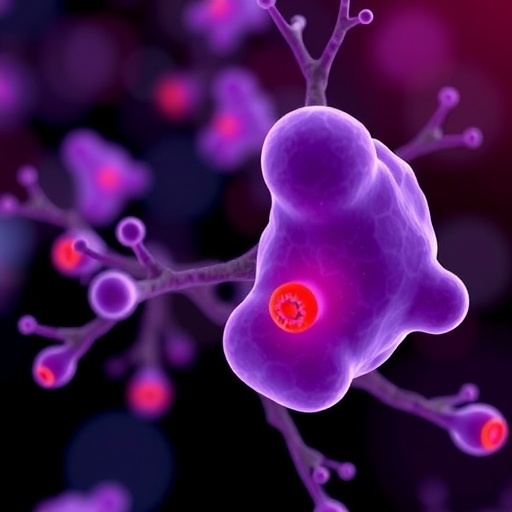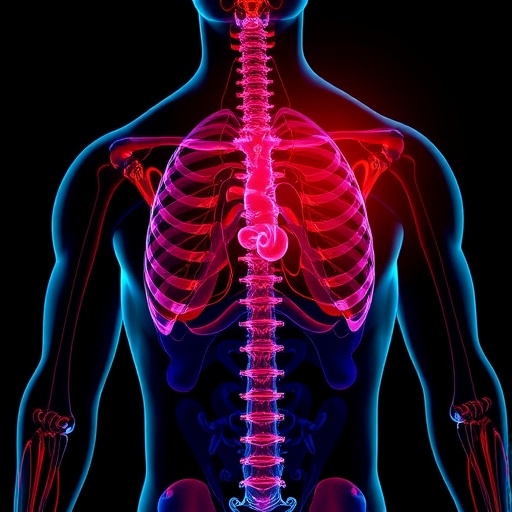The ASAP Trial Redefines Treatment Paradigms for Acute Myeloid Leukemia: High-Dose Chemotherapy May Not Be Essential Before Stem Cell Transplantation
In a breakthrough that challenges longstanding therapeutic standards for acute myeloid leukemia (AML), the ASAP trial has presented compelling evidence that immediate allogeneic hematopoietic stem cell transplantation (allo-HSCT) without prior high-dose salvage chemotherapy yields survival outcomes comparable to the current standard of care, which mandates remission induction before transplantation. This landmark study, recently published in the esteemed journal Blood, ushers in a potential paradigm shift in AML treatment by demonstrating that expedited transplantation facilitates faster progression to curative intervention and diminishes the chemotherapy-related toxic burden on patients.
AML, a heterogeneous and aggressive hematologic malignancy, has traditionally required intensive salvage chemotherapy to induce remission prior to allo-HSCT, the latter being the only curative option for many patients. This conventional approach predicates improved outcomes on the assumption that reduction of leukemic burden pre-transplant enhances post-transplant survival. The ASAP study, an acronym for “as soon as possible,” disrupts this dogma by rigorously comparing the efficacy of immediate transplantation following intensified conditioning with less aggressive disease control strategies against the traditional remission induction protocol.
The trial enrolled patients with relapsed or refractory AML characterized by poor responsiveness to initial therapy, stratifying them into two treatment arms: the standard of care (SOC) group receiving salvage chemotherapy to induce remission before allo-HSCT, and the alternative arm undergoing prompt transplantation aided by intensified conditioning regimens supplemented with non-intensive leukemia control or active monitoring. Importantly, a robust median follow-up duration of 61 months facilitated an unprecedented long-term outcome analysis, furnishing critical survival data.
Analysis revealed remarkably similar five-year overall survival (OS) rates between the cohorts: 47.5% in the SOC arm versus 46.1% in the immediate transplantation arm. While the trial could not definitively establish non-inferiority of the experimental approach, these findings unequivocally suggest that remission induction chemotherapy may not be universally necessary to achieve comparable survival results. This equivalence has profound implications for clinical decision-making, given that patients in the SOC arm endured prolonged hospitalizations—approximately one month longer—and heightened incidence of adverse events frequently associated with intensive chemotherapy regimens.
Delving deeper into prognostic determinants, the ASAP study underscores the preeminence of intrinsic disease biology, particularly age and AML genetics as classified by the European LeukemiaNet (ELN) 2022 risk criteria, in dictating transplant outcomes. Five-year OS markedly differed across risk strata irrespective of treatment arms, with favorable-risk patients achieving a 66% survival probability, intermediate-risk patients 53%, and adverse-risk patients only 34%. These stratifications reinforce existing paradigms that genetics serve as critical arbiters of therapeutic success, outweighing the benefits of remission status ahead of transplantation.
Intriguingly, when stratifying outcomes by combined ELN risk and treatment modality, patients with favorable or intermediate-risk AML undergoing immediate transplantation with watchful waiting protocols exhibited a higher three-year OS (77%) compared to those transplanted in complete remission after salvage therapy (66%). This counterintuitive result challenges conventional prognostic assumptions, suggesting certain molecular profiles may derive particular benefit from expedited transplantation strategies without extensive preconditioning chemotherapy.
The implications of these data extend beyond clinical survival statistics, emphasizing a pressing need to integrate precision medicine frameworks into transplantation protocols for AML. The ASAP findings spotlight that efforts to reduce leukemic load via cytotoxic salvage regimens prior to allo-HSCT might not confer the anticipated survival advantage, pivoting focus toward the biological characteristics of the disease itself. Consequently, personalized bridging therapies and post-transplant maintenance approaches tailored to genetic risk profiles emerge as vital areas for therapeutic innovation.
Several key insights crystallize from the ASAP trial. First, accelerated transplantation is feasible and safe for patients otherwise exposed to the toxicity and morbidity of salvage chemotherapy. Second, remission status at the time of transplant is less predictive of long-term survival than previously assumed. Third, AML genetics remain the cornerstone of risk stratification and outcome prediction, warranting integration of genomic profiling into routine treatment algorithms to guide individualized therapeutic choices.
Moreover, the study’s authors advocate for intensified research into novel bridging strategies with favorable tolerability that can synergize with allo-HSCT, especially for patients bearing adverse-risk AML, who continue to face dismal prognoses despite current treatments. These approaches might encompass targeted therapies, immunomodulatory agents, or maintenance regimens leveraging molecular vulnerabilities unique to specific leukemic clones.
The ASAP trial also serves as a testament to the power of global collaborative research networks in advancing hematologic oncology. Spearheaded by DKMS, an international non-profit organization dedicated to improving survival in blood cancer, the study exemplifies the relentless pursuit of evidence-based practices free from commercial bias. DKMS’s commitment extends beyond clinical trials to include financial support for young investigators and dissemination of findings through international platforms, fostering a fertile environment for innovation and multidisciplinary dialogue.
Looking ahead, the ASAP trial presents a compelling case for revising international treatment guidelines for AML, encouraging clinicians to consider immediate transplantation strategies when appropriate and to focus on genetic risk profiling as a principal decision-making tool. This shift promises to minimize patient exposure to the deleterious effects of high-dose chemotherapy, shorten hospitalization durations, and potentially enhance quality of life without compromising survival outcomes.
In summary, the ASAP trial redefines the therapeutic landscape for acute myeloid leukemia by demonstrating that remission induction with intensive chemotherapy is not an indispensable prerequisite for successful allogeneic stem cell transplantation in relapsed or refractory cases. Instead, patient-specific disease biology, particularly genetic risk status, holds greater prognostic weight. These revelations herald a new era of precision medicine in hematopoietic transplantation, where tailored approaches informed by molecular diagnostics and innovative bridging therapies aim to optimize outcomes and transform the standard of care in AML management.
Subject of Research: People
Article Title: Disease risk but not remission status determines transplant outcomes in AML: long-term outcomes of the ASAP trial
News Publication Date: 30-Jul-2025
Web References: Not provided
References:
1. Stelljes, M. et al. Disease risk but not remission status determines transplant outcomes in AML: long-term outcomes of the ASAP trial. Blood. 2025 Jul 30; blood.2025028730. doi: 10.1182/blood.2025028730
2. Stelljes, M. et al. Remission induction versus immediate allogeneic haematopoietic stem cell transplantation for patients with relapsed or poor responsive acute myeloid leukaemia (ASAP): a randomised, open-label, phase 3, non-inferiority trial. Lancet Haematol. 2024;11(5):e324-e335. doi: 10.1016/S2352-3026(24)00065-6
Image Credits: © DKMS (Photo: Tobias Ebert)
Keywords: Stem cell research, Hematology, Blood cancer, Transplantation, Cell transplantation
Tags: acute myeloid leukemia treatmentallo-HSCT without prior chemotherapyASAP trial outcomeschemotherapy-related toxicity reductionhigh-dose chemotherapy alternativesintensive chemotherapy vs. expedited transplantationleukemia remission inductionparadigm shift in AML therapyrelapsed refractory AML treatment strategiesstem cell transplantation in AMLsurvival rates in AML patientstherapeutic standards in hematologic malignancies





